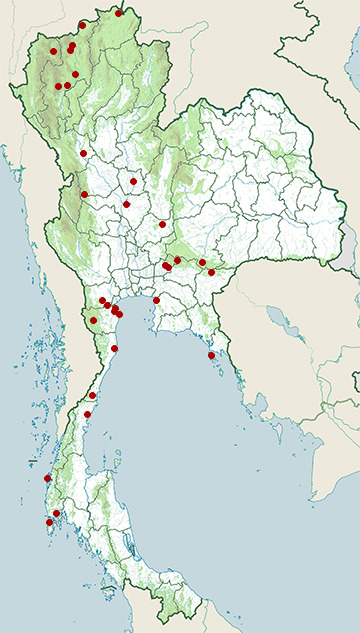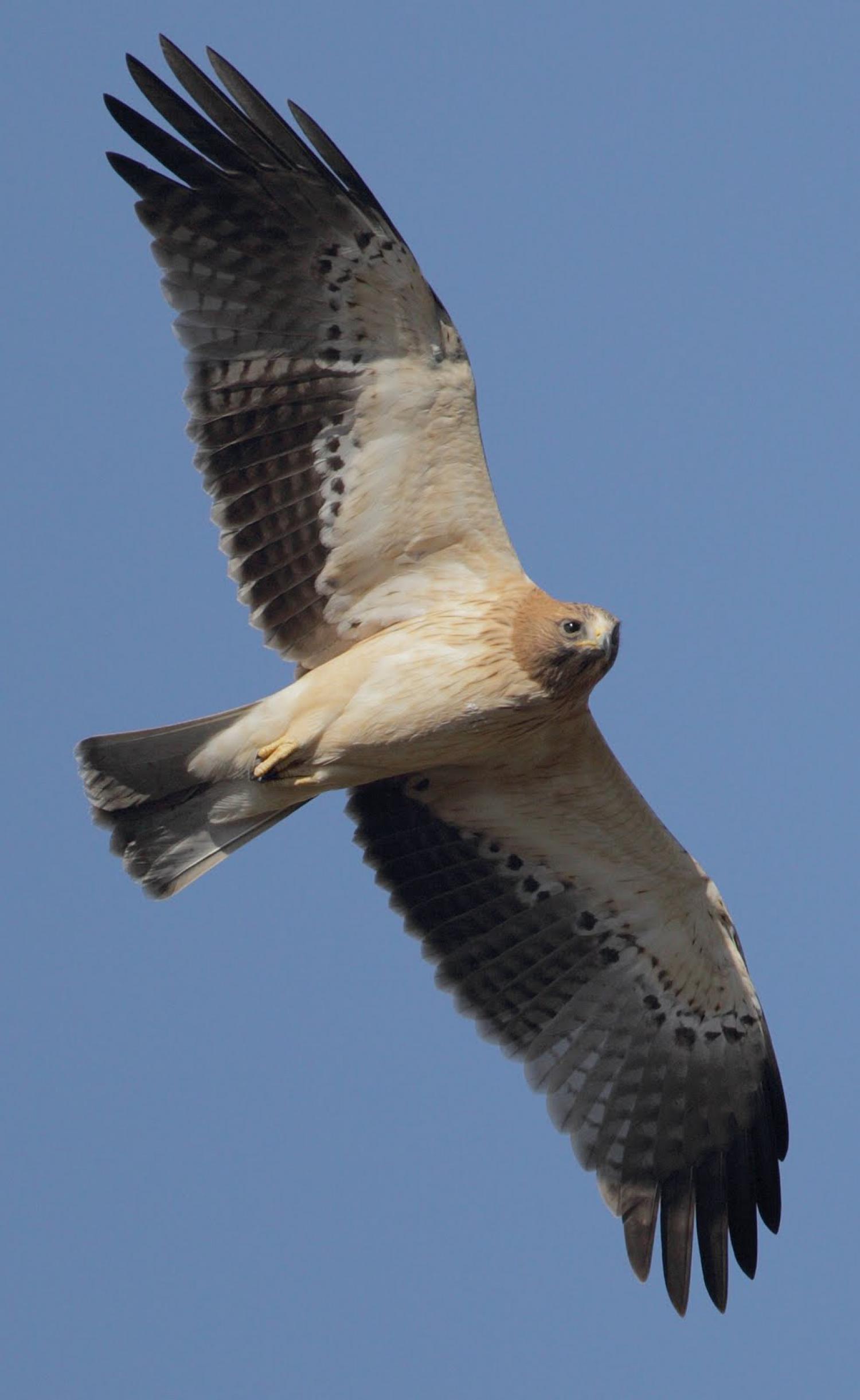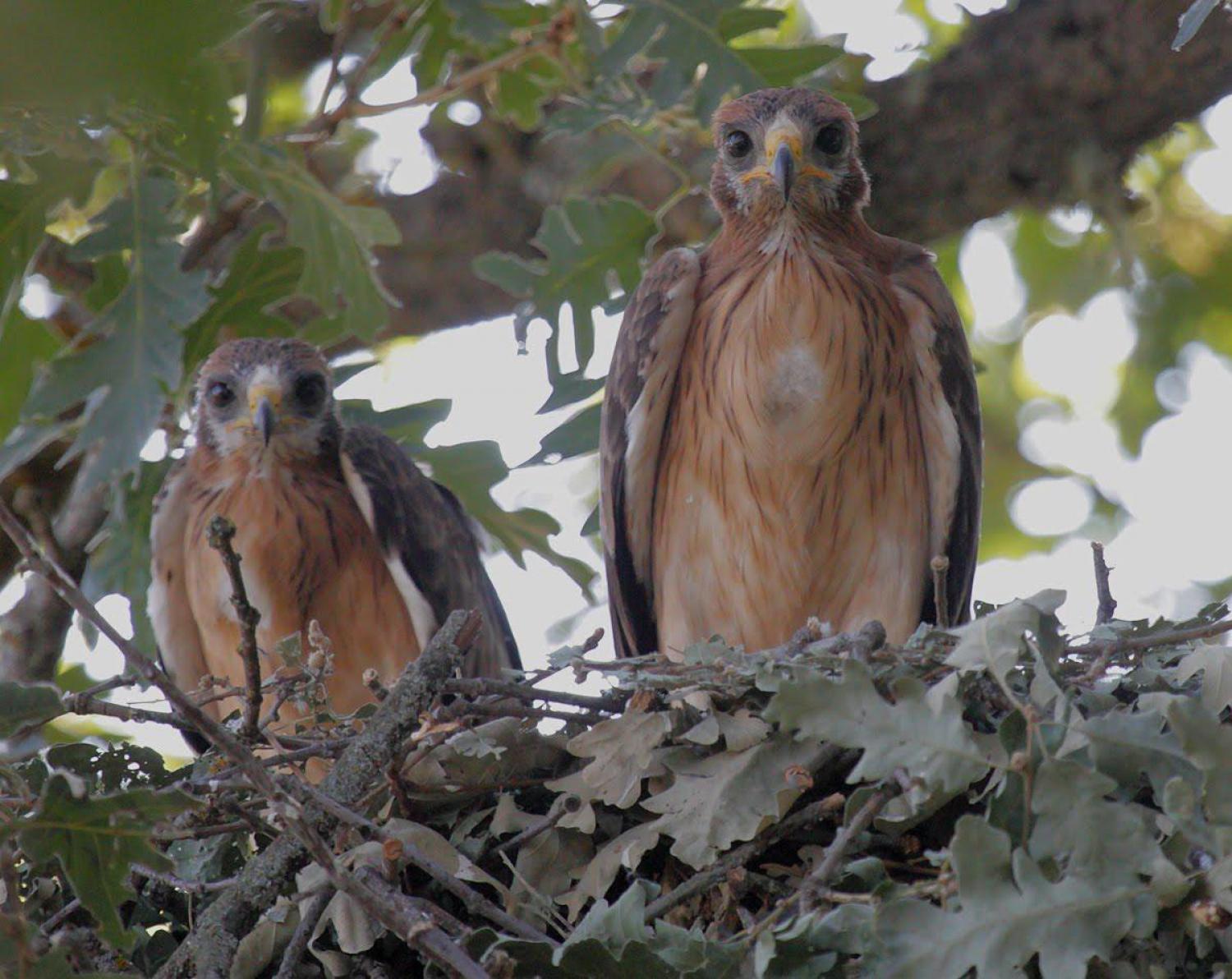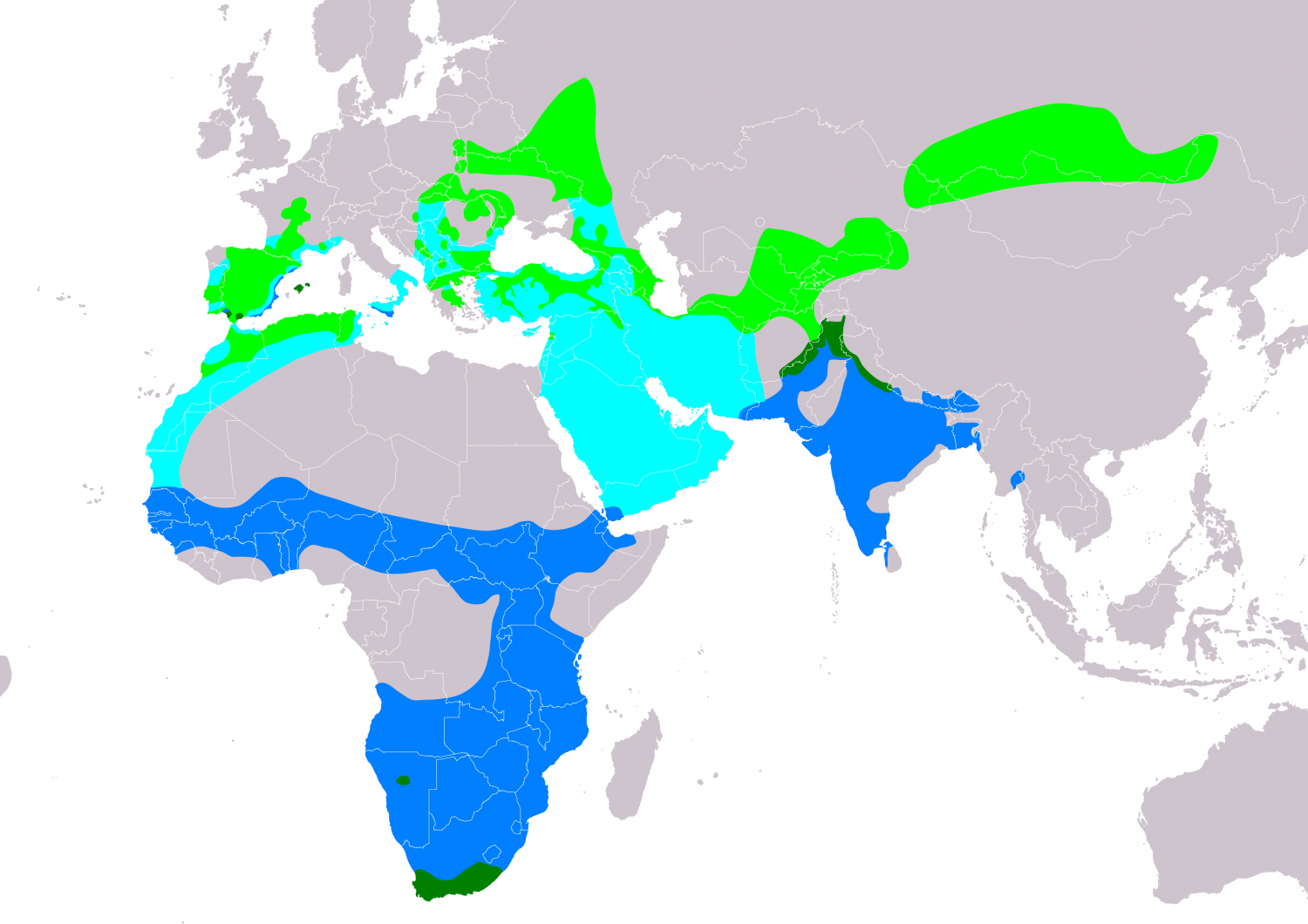Species of Thailand
Booted eagle
Hieraaetus pennatus
Johann Friedrich Gmelin, 1788
In Thai: นกอินทรีเล็ก
The booted eagle (Hieraaetus pennatus, also classified as Aquila pennata) is a medium-sized mostly migratory bird of prey with a wide distribution in the Palearctic and southern Asia, wintering in the tropics of Africa and Asia, with a small, disjunct breeding population in south-western Africa. Like all eagles, it belongs to the family Accipitridae.
Description
The booted is a small eagle, comparable to the common buzzard in size though more eagle-like in shape. Males grow to about 510 – 770 g lb abbr=on in weight, with females about 840 – 1025 g lb abbr=on with a length of 40 cm and a wingspan of 11–132 cm. There are two relatively distinct plumage forms. Pale birds are mainly light grey with a darker head and flight feathers. The other form has mid-brown plumage with dark grey flight feathers.
The call is a shrill kli-kli-kli.
Distribution and habitat
It breeds in southern Europe, North Africa and across Asia, and also in western South Africa and Namibia.
The northern populations are migratory spending November to February in Sub-Saharan Africa and South Asia, while the small southern African populations is sedentary. This is a species of wooded, often hilly countryside with some open areas, it breeds in rocky, broken terrain but migrants will use almost any type of habitat other than dense forest.
Habits
This eagle lays 1–2 eggs in a nest built from sticks and lined with green leaves in a tree or on a crag, or it takes over the disused nest of another large bird such as a black kite or grey heron. The female incubates the egg for around 45 days and is fed by the male, after hatching she guards the nest and the young while the male provides all the food. The chick fledges after 70–75 days.
It hunts small mammals, reptiles and birds.
Taxonomy
Based on recent genetic research some authors reclassified this species to the genus Aquila, along with some or all other Hieraaetus species. As it is the type species of Hieraaetus, should any of the hawk-eagles have been retained in a distinct genus then a new name for that group would have been necessary. However, DNA research has shown it forms a monophyletic clade with Ayres's hawk eagle, Wahlberg's eagle, little eagle and the pygmy eagle and this clade is often treated as forming the genus Hieraeetus and most reference lists currently use H. pennata.
Along with the little eagle, this bird is one of the closest living relatives of the extinct Haast's eagle of New Zealand.
Although some authors name a number of subspecies most now treat it as a monotypic species.
Aquila minut described by Brehm (1831) is this bird. The fossil bird described under the same name by Milne-Edwards (1871) is preliminarily known as Hieraaetus edwardsi but might belong in Aquila.
This article uses material from Wikipedia released under the Creative Commons Attribution-Share-Alike Licence 3.0. Eventual photos shown in this page may or may not be from Wikipedia, please see the license details for photos in photo by-lines.
Category / Seasonal Status
Wiki listed status (concerning Thai population): Rare passage migrant and winter visitor
BCST Category: Recorded in an apparently wild state within the last 50 years
BCST Seasonal status: Non-breeding visitor
Scientific classification
- Kingdom
- Animalia
- Phylum
- Chordata
- Class
- Aves
- Order
- Accipitriformes
- Family
- Accipitridae
- Genus
- Hieraaetus
- Species
- Hieraaetus pennatus
Common names
- French: Aigle botté
- Thai: นกอินทรีเล็ก
Subspecies
Hieraaetus pennatus harterti Stegmann, Boris K. Stegmann, 1935
Common name: Booted Eagle
Hieraaetus pennatus milvoides, Thomas Caverhill Jerdon, 1839
Common name: Booted eagle
Hieraaetus pennatus minisculus Yosef, Reuven Yosef et. al, 2000
Common name: Booted eagle
Hieraaetus pennatus pennatus, Johann Friedrich Gmelin, 1788
Common name: Booted eagle
Synonyms
- Aquila minuta, Christian Ludwig Brehm (1831)
- Aquila pennata, Johann Friedrich Gmelin (1788)
Conservation status

Least Concern (IUCN3.1)
Photos
Please help us review the bird photos if wrong ones are used. We can be reached via our contact us page.
Range Map

- Ao Phang-Nga National Park
- Ban Laem District, Phetchaburi
- Bang Saphan Noi District, Prachuap Khiri Khan
- Bueng Boraped Non-Hunting Area
- Chai Badan District, Lopburi
- Chiang Dao District, Chiang Mai
- Chiang Dao Wildlife Sanctuary
- Doi Inthanon National Park
- Doi Lo District, Chiang Mai
- Doi Pha Hom Pok National Park
- Kaeng Krachan National Park
- Khao Dinsor (Chumphon Raptor Center)
- Khao Sam Roi Yot National Park
- Khao Yai National Park
- Khao Yoi District, Phetchaburi
- Ko Chang National Park
- Ko Phra Thong
- Laem Pak Bia
- Mae Wong National Park
- Mueang Chiang Mai District, Chiang Mai
- Mueang Chonburi District, Chonburi
- Mueang Nakhon Nayok District, Nakhon Nayok
- Mueang Phetchaburi District, Phetchaburi
- Mueang Tak District, Tak
- Nong Bong Khai Non-Hunting Area
- Pai District, Mae Hong Son
- Pak Phli District, Nakhon Nayok
- Pak Tho District, Ratchaburi
- Pang Sida National Park
- Taphan Hin District, Phichit
- Thalang District, Phuket
- Thap Lan National Park


